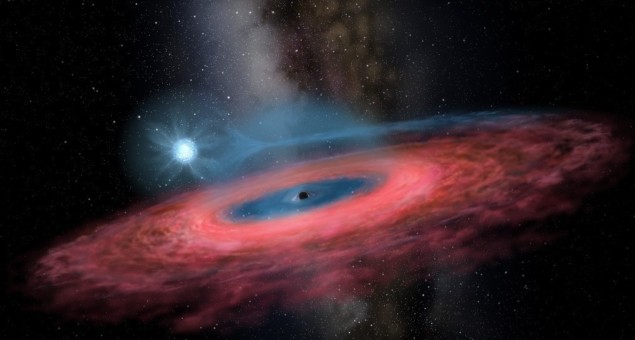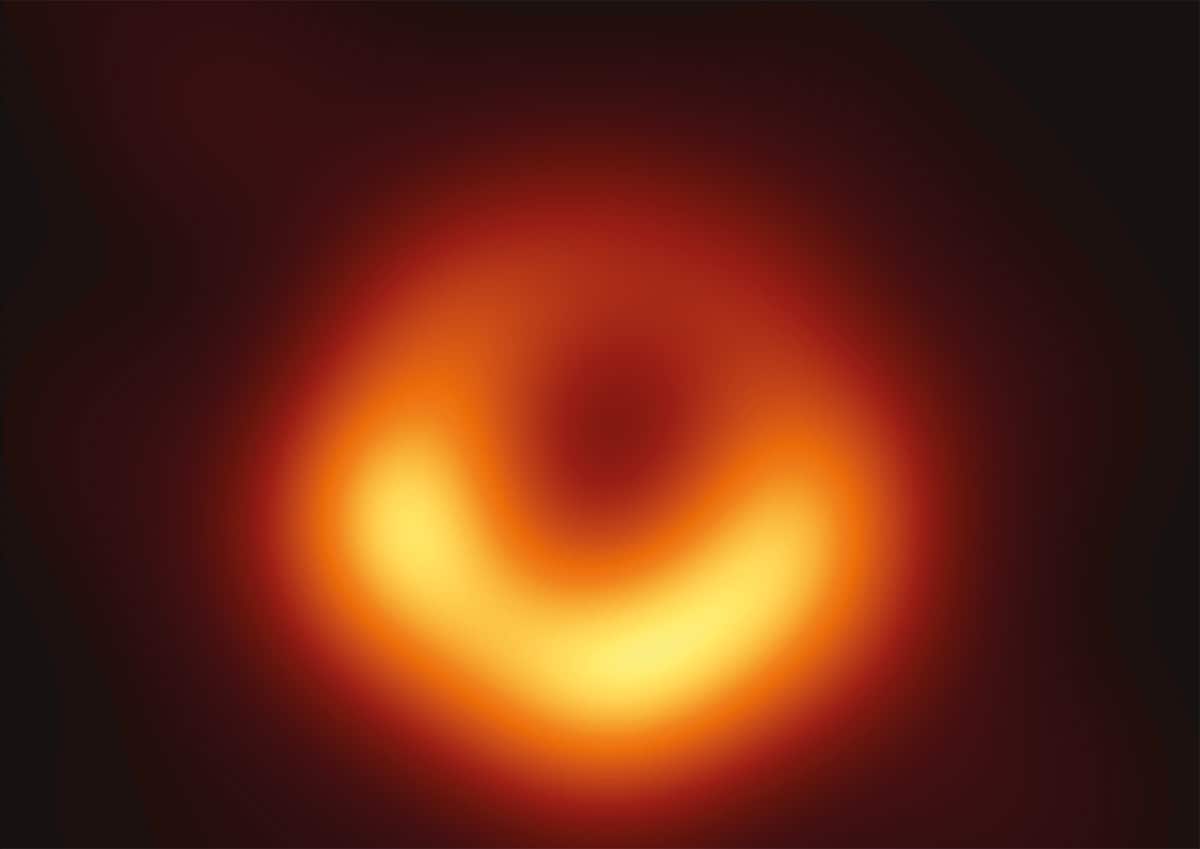
A 70-solar-mass black hole has been discovered orbiting a star in the Milky Way. The object is the heaviest stellar-mass black hole detected so far in our galaxy. Its very existence is puzzling astronomers because black holes of this size are not expected in the Milky Way.
Formed by the gravitational collapse of massive stars, black holes are difficult to observe because light cannot escape their powerful gravitational pull. As a result, astronomers look for the effects of a black hole on its surroundings. This is relatively easy to do for some supermassive black holes, which weigh-in at millions or billions of Suns and light-up the centres of galaxies including the Milky Way.
Much more difficult to see are stellar-mass black holes, which have tens of solar masses. Since 2015, the LIGO (and subsequently Virgo) gravitational wave detectors have spotted the merger of several pairs of stellar-mass black holes – suggesting that black holes of at least 70-80 solar masses existed long ago in distant galaxies.
Gas gobblers
Closer to home in the Milky Way, astronomers have found several black holes by looking for X-rays produced when gas from a nearby star is sucked into the objects. While there are an estimated 100 million stellar-mass black holes in the Milky Way, only about two dozen have been spotted using X-rays – suggesting that most black holes are not gobbling gas from companions. These black holes all weigh in at under 30 solar masses.
Now, an international team of astronomers has used the LAMOST telescope in China to detect a stellar-mass black hole by its effect on a companion star in a binary system. The binary system about 15,000 light-years away in the Milky Way and has been dubbed LB-1.
The black hole was identified by detecting a periodic change in the radial velocity of the companion star as the two objects orbit each other. Every 79 days, the star accelerates towards and then away from Earth – and this can be detected as a Doppler shift of the light from the star. By studying other aspects of the light from the star, the team could also conclude that is about eight solar masses.
“Extraordinary” mass
The team also observed light coming from a disc of hydrogen surrounding the black hole, allowing them to track the motion of the black hole itself. Putting this information together, the astronomers worked-out that the black hole is 70 solar masses – something they describe as “extraordinary”.
The team was led by Jifeng Liu of the National Astronomical Observatory of China of the Chinese Academy of Sciences and he explains why he was so surprised: “Black holes of such mass should not even exist in our galaxy, according to most of the current models of stellar evolution”.

First images of a black hole unveiled by astronomers in landmark discovery
Liu adds, “We thought that very massive stars with a chemical composition typical of our galaxy must shed most of their gas in powerful stellar winds, as they approach the end of their life. Therefore, they should not leave behind such a massive remnant [black hole].”
“LB-1 is twice as massive as what we thought possible,” adds Liu, “Now theorists will have to take up the challenge of explaining its formation”.
The observation is described in Nature.
Science - Latest - Google News
November 28, 2019 at 11:49PM
https://ift.tt/37PrvEv
'Extraordinary' black hole weighs in at 70 solar masses - physicsworld.com
Science - Latest - Google News
https://ift.tt/2Kb7H4e
Shoes Man Tutorial
Pos News Update
Meme Update
Korean Entertainment News
Japan News Update
Bagikan Berita Ini














0 Response to "'Extraordinary' black hole weighs in at 70 solar masses - physicsworld.com"
Post a Comment